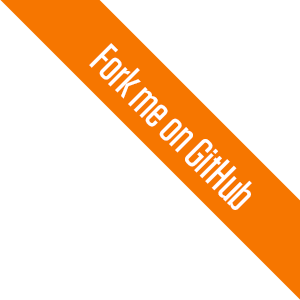Java Spring Boot VS .NetCore (八) Java 注解 vs .NetCore Attribute
Java Spring Boot VS .NetCore (一)来一个简单的 Hello World
Java Spring Boot VS .NetCore (二)实现一个过滤器Filter
Java Spring Boot VS .NetCore (三)Ioc容器处理
Java Spring Boot VS .NetCore (四)数据库操作 Spring Data JPA vs EFCore
Java Spring Boot VS .NetCore (五)MyBatis vs EFCore
Java Spring Boot VS .NetCore (六) UI thymeleaf vs cshtml
Java Spring Boot VS .NetCore (七) 配置文件
Java Spring Boot VS .NetCore (八) Java 注解 vs .NetCore Attribute
Java Spring Boot VS .NetCore (九) Spring Security vs .NetCore Security
Java Spring Boot VS .NetCore (十) Java Interceptor vs .NetCore Interceptor
Java Spring Boot VS .NetCore (十一)自定义标签 Java Tag Freemarker VS .NetCore Tag TagHelper
继续前面的章节,这里我介绍下注解,其实Java注解跟.NetCore的特性标签类似,下面我们通过代码来说明
Java自定义注解
首先我先说下Java注解需要使用的注解
@Target(value = ElementType.METHOD)
@Retention(RetentionPolicy.RUNTIME)
@Documented
Taget:指定注解在什么地方生效,作用于什么对象上,参数很多这里把源码拉出来了,每一个的意思就不过多介绍,一看就明白
public enum ElementType { /** 类、接口(包括注释类型)或枚举声明 */ TYPE, /** 字段声明(包括枚举常量) */ FIELD, /** 方法声明 */ METHOD, /** 形式参数声明 */ PARAMETER, /** 构造函数声明 */ CONSTRUCTOR, /** 局部变量声明 */ LOCAL_VARIABLE, /** 注释类型声明 */ ANNOTATION_TYPE, /** 程序包声明 */ PACKAGE, /** * 类型参数声明 * * @since 1.8 */ TYPE_PARAMETER, /** * 使用类型 * * @since 1.8 */ TYPE_USE }
public enum RetentionPolicy { /** 注解将被编译器丢弃 */ SOURCE, /** 注解将由编译器记录在类文件中,但在运行时不需要由VM保留。这是默认的行为。 */ CLASS, /** 注解将由编译器记录在类文件中,并在运行时由VM保留,因此可以通过反射读取当前注解。*/ RUNTIME }
@Documented @Retention(RetentionPolicy.RUNTIME) @Target(ElementType.ANNOTATION_TYPE) public @interface Documented { /* 注解表明这个注解应该被 javadoc工具记录 */ }
下面就来模拟一个自定义的注解,同时简单并模拟MyBatis中的像如下写法,解析下面代码的实现原理
@Select("SELECT username,email,newname,nick_name FROM user_model")
@Results({
@Result(property = "username", column = "username"),
@Result(property = "email", column = "email"),
@Result(property = "newname", column = "newname"),
@Result(property = "nickName", column = "nick_name")
})
List<UserModel> getAll();
这里定义一个自定义的注解接口 代码如下,注解要作用于方法上
Target(value = ElementType.METHOD) @Retention(RetentionPolicy.RUNTIME) @Documented public @interface CustomSelect { String Sql() default ""; }
这一步也非常简单,定义一个操作接口,使用自定义的注解,添加好相关的Sql语句
public interface ReflectorDao { @CustomSelect(Sql = "select * from user_model where id=1") int InsertModel(); }
接下来就是怎么使用了,当然这里还是要用到反射 ,这里我添加了一个测试方法,里面模拟实现了一个JDBC的操作方法
@Test public void testReflectorDao() throws Exception { Class<?> c= ReflectorDao.class; Method method=c.getMethod("InsertModel"); CustomSelect customSelect=method.getAnnotation(CustomSelect.class); String strsql= customSelect.Sql(); System.out.print(strsql+"\r\n"); //调用JDBC完成操作 JDBCHelper.ExcuteQuery(strsql); }
这里反射里面的方法就不特殊说明了,这里说下 获取注解的方法把,如下
// // 获取某个类型的注解 // public <A extends Annotation> A getAnnotation(Class<A> annotationClass); // // 获取所有注解(包括父类中被Inherited修饰的注解) // public Annotation[] getAnnotations(); // // 获取声明的注解(但是不包括父类中被Inherited修饰的注解) // public Annotation[] getDeclaredAnnotations(); // // 判断某个对象上是否被某个注解进行标注 // public boolean isAnnotationPresent(Class<? extends Annotation> annotationClass) // // // 获取某个类声明的所有字段 // public Field[] getDeclaredFields() throws SecurityException; // // 获取某个方法 // public Method getMethod(String name, Class<?>... parameterTypes);
执行下单元测试: OK


.NetCore Attribute
Java中有的 .NetCore一样能实现,这里就要介绍.NetCore总的特性了,就是Attribute类,怎么来使用这个呢?不要急,通过带来是解释,自定义的特性需要继承Attribute类,且类名可以以Attribute结尾,这样在使用的时候就可以通过前面的名称来写,代码如下
[AttributeUsage(AttributeTargets.Method, AllowMultiple = true, Inherited = false)] public class CustomAttribute : Attribute { public string Sql { get; set; } }
看到这里,就有一种熟悉感,看下源码,这里什么Class 等等更Java用法一样标识该特性作用于什么对象上,AllowMultiple :标识是否可以指定多次,同一个对象上多次使用特性,Inherited:当前特性是否可以被继承
// // 摘要: // Specifies the application elements on which it is valid to apply an attribute. [Flags] public enum AttributeTargets { // // 摘要: // Attribute can be applied to an assembly. Assembly = 1, // // 摘要: // Attribute can be applied to a module. Module = 2, // // 摘要: // Attribute can be applied to a class. Class = 4, // // 摘要: // Attribute can be applied to a structure; that is, a value type. Struct = 8, // // 摘要: // Attribute can be applied to an enumeration. Enum = 16, // // 摘要: // Attribute can be applied to a constructor. Constructor = 32, // // 摘要: // Attribute can be applied to a method. Method = 64, // // 摘要: // Attribute can be applied to a property. Property = 128, // // 摘要: // Attribute can be applied to a field. Field = 256, // // 摘要: // Attribute can be applied to an event. Event = 512, // // 摘要: // Attribute can be applied to an interface. Interface = 1024, // // 摘要: // Attribute can be applied to a parameter. Parameter = 2048, // // 摘要: // Attribute can be applied to a delegate. Delegate = 4096, // // 摘要: // Attribute can be applied to a return value. ReturnValue = 8192, // // 摘要: // Attribute can be applied to a generic parameter. GenericParameter = 16384, // // 摘要: // Attribute can be applied to any application element. All = 32767 }
下面我们同样用接口来实现,代码如下,前面说了 自定义属性已Attribute结尾的类名,写的时候直接写Custom
public interface RelactorDao { [Custom(Sql = "select * from user_model where id=1")] void InsertModel(); }
这里我写一个测试类是看下,由于时间的关系,这里就不写SqlHelper 来执行了,输入下Sql就行了,这个跟Java一样需要使用反射,思想一样,只是使用方法名称不同而已,具体的方法就不做介绍..有兴趣自己了解下
public class TestClass { public void TestMethod() { var type = typeof(RelactorDao); MethodInfo methodInfo= type.GetMethod("InsertModel"); var atrrs = methodInfo.GetCustomAttributes(typeof(CustomAttribute), false) as CustomAttribute[]; var strSql = atrrs.First().Sql; //当然这里也可以执行 Console.WriteLine(strSql); } }
接下来我们在看下执行效果 OK

总结
这里只是简单的模拟下,其实要实现MyBatis中的注解的功能,其实还需要其他的知识,面向切面编程的技术AOP
Java中的 @Aspect 注解 ,.NetCore 可以通过动态代理来实现,但是反过来想下,.NetCore中一样可以实现类似于MyBait一样使用方式的ORM框架,可能.NetCore中考虑到大量应用反射会导致性能问题
如果您觉得阅读本文对您有帮助,请点一下“推荐”按钮,您的“推荐”将是我最大的写作动力!
本文版权归作者和博客园共有,来源网址:http://www.cnblogs.com/liyouming欢迎各位转载,但是未经作者本人同意,转载文章之后必须在文章页面明显位置给出作者和原文连接。



